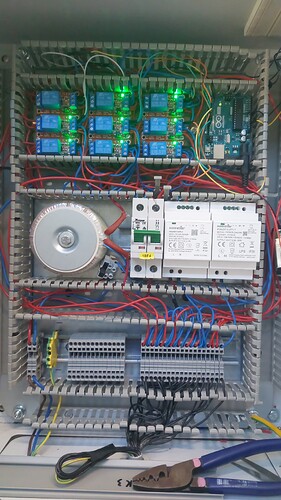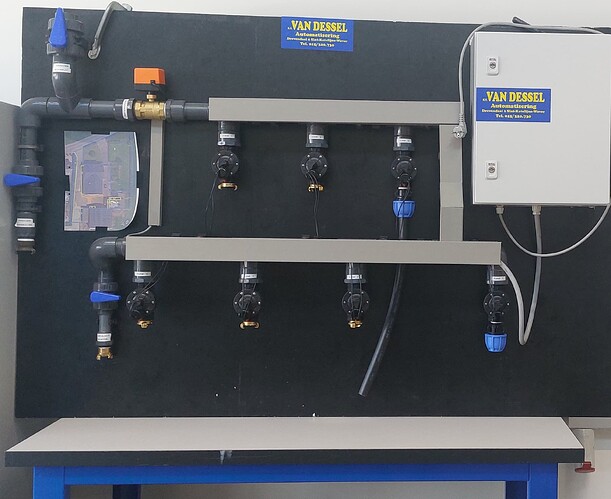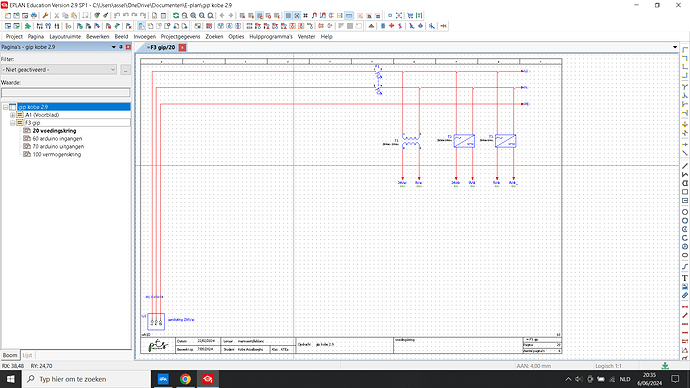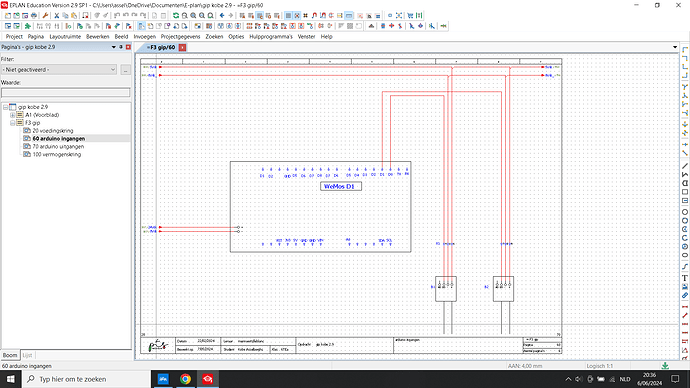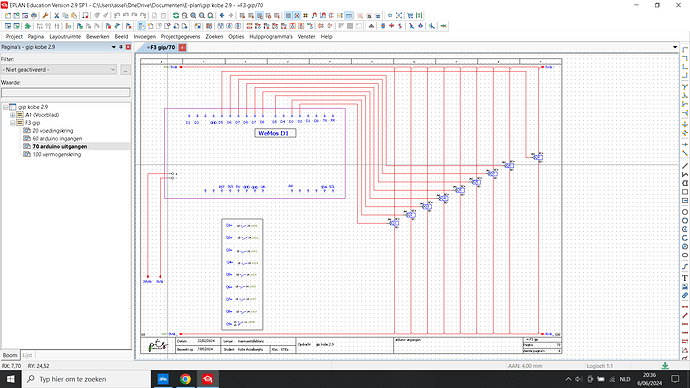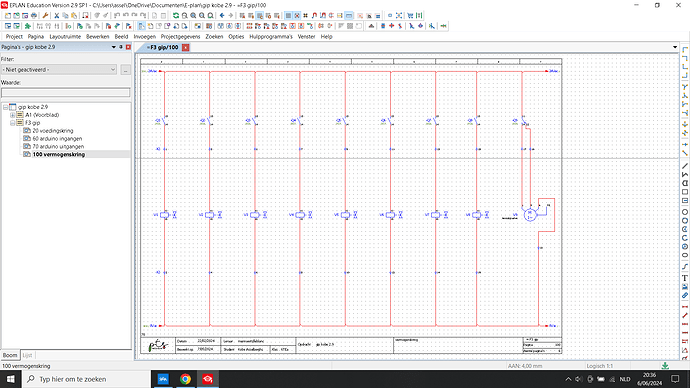hello everyone,
i want to get relays to switch by sending characters into a bluetooth module HC-05. when i sent characters to the module nothing happens. someone who can help me with it?? im fairly new to using arduino so it could be that i made some stupid mistakes
#include <SoftwareSerial.h>
//Bluetooth Tx pin to Arduino 1
//Bluetooth Rx pin to Arduino 0
#define rxPin 2
#define txPin 3
SoftwareSerial Bluetooth(rxPin,txPin);
#define RELAY_1 4
#define RELAY_2 5
#define RELAY_3 6
#define RELAY_4 7
#define RELAY_5 8
#define RELAY_6 9
#define RELAY_7 10
#define RELAY_8 11
#define RELAY_9 12
String data = "";
void setup() {
pinMode(RELAY_1, OUTPUT); //Relay 1
pinMode(RELAY_2, OUTPUT); //Relay 2
pinMode(RELAY_3, OUTPUT); //Relay 3
pinMode(RELAY_4, OUTPUT); //Relay 4
pinMode(RELAY_5, OUTPUT); //Relay 5
pinMode(RELAY_6, OUTPUT); //Relay 6
pinMode(RELAY_7, OUTPUT); //Relay 7
pinMode(RELAY_8, OUTPUT); //Relay 8
pinMode(RELAY_9, OUTPUT); //Relay 9
Serial.begin(115200);
Serial.println("Arduino serial initialize");
Bluetooth.begin(9600);
Serial.println("Bluetooth software serial initialize");
}
void loop() {
while(Bluetooth.available() > 0){
data = Bluetooth.readString();
Serial.println(data);
data.toLowerCase();
//NNNNNNNNNNNNNNNNNNNNNNNNNNNNNNNNNNNNNNNNNNNNNNNNNNNNNNNNNN
//Control Valve 1
//NNNNNNNNNNNNNNNNNNNNNNNNNNNNNNNNNNNNNNNNNNNNNNNNNNNNNNNNNN
if(data == "valve 1 on"){
digitalWrite(RELAY_1 , HIGH);
digitalWrite(RELAY_9 , HIGH);}
else if(data == "Valve 1 off"){
digitalWrite(RELAY_1 , LOW);
digitalWrite(RELAY_9 , LOW);}
//NNNNNNNNNNNNNNNNNNNNNNNNNNNNNNNNNNNNNNNNNNNNNNNNNNNNNNNNNN
//Control Valve 2
//NNNNNNNNNNNNNNNNNNNNNNNNNNNNNNNNNNNNNNNNNNNNNNNNNNNNNNNNNN
else if(data == "valve 2 on"){
digitalWrite(RELAY_2 , HIGH);
digitalWrite(RELAY_9 , HIGH);}
else if(data == "Valve 2 off"){
digitalWrite(RELAY_2 , LOW);
digitalWrite(RELAY_9 , LOW);}
//NNNNNNNNNNNNNNNNNNNNNNNNNNNNNNNNNNNNNNNNNNNNNNNNNNNNNNNNNN
//Control Valve 3
//NNNNNNNNNNNNNNNNNNNNNNNNNNNNNNNNNNNNNNNNNNNNNNNNNNNNNNNNNN
else if(data == "Valve 3 on"){
digitalWrite(RELAY_3 , HIGH);
digitalWrite(RELAY_9 , HIGH);}
else if(data == "Valve3 off"){
digitalWrite(RELAY_3 , LOW);
digitalWrite(RELAY_9 , LOW);}
//NNNNNNNNNNNNNNNNNNNNNNNNNNNNNNNNNNNNNNNNNNNNNNNNNNNNNNNNNN
//Control Valve 4
//NNNNNNNNNNNNNNNNNNNNNNNNNNNNNNNNNNNNNNNNNNNNNNNNNNNNNNNNNN
else if(data == "valve 4 on"){
digitalWrite(RELAY_4 , HIGH);
digitalWrite(RELAY_9 , HIGH);}
else if(data == "Valve 4 off"){
digitalWrite(RELAY_4 , LOW);
digitalWrite(RELAY_9 , LOW);}
//NNNNNNNNNNNNNNNNNNNNNNNNNNNNNNNNNNNNNNNNNNNNNNNNNNNNNNNNNN
//Control Valve 5
//NNNNNNNNNNNNNNNNNNNNNNNNNNNNNNNNNNNNNNNNNNNNNNNNNNNNNNNNNN
else if(data == "Valve 5 on"){
digitalWrite(RELAY_5, HIGH);
digitalWrite(RELAY_9, HIGH);}
else if(data == "Valve 5 off"){
digitalWrite(RELAY_5 , LOW);
digitalWrite(RELAY_9 , LOW);}
//NNNNNNNNNNNNNNNNNNNNNNNNNNNNNNNNNNNNNNNNNNNNNNNNNNNNNNNNNNN
//Control Valve 6
//NNNNNNNNNNNNNNNNNNNNNNNNNNNNNNNNNNNNNNNNNNNNNNNNNNNNNNNNNN
else if(data == "valve 6 on"){
digitalWrite(RELAY_6, HIGH);
digitalWrite(RELAY_9, HIGH);}
else if(data == "Valve 6 off"){
digitalWrite(RELAY_6 , LOW);
digitalWrite(RELAY_9 , LOW);}
//NNNNNNNNNNNNNNNNNNNNNNNNNNNNNNNNNNNNNNNNNNNNNNNNNNNNNNNNNN
//Control Valve 7
//NNNNNNNNNNNNNNNNNNNNNNNNNNNNNNNNNNNNNNNNNNNNNNNNNNNNNNNNNN
else if(data == "valve 7 on"){
digitalWrite(RELAY_7 , HIGH);
digitalWrite(RELAY_9 , HIGH);}
else if(data == "Valve 7 off"){
digitalWrite(RELAY_7 , LOW);
digitalWrite(RELAY_9 , LOW);}
//NNNNNNNNNNNNNNNNNNNNNNNNNNNNNNNNNNNNNNNNNNNNNNNNNNNNNNNNNN
//Control Valve 8
//NNNNNNNNNNNNNNNNNNNNNNNNNNNNNNNNNNNNNNNNNNNNNNNNNNNNNNNNNN
else if(data == "valve 8 on"){
digitalWrite(RELAY_8 , HIGH);
digitalWrite(RELAY_9 , HIGH);}
else if(data == "Valve 8 off"){
digitalWrite(RELAY_8 , LOW);
digitalWrite(RELAY_9 , LOW);}
//NNNNNNNNNNNNNNNNNNNNNNNNNNNNNNNNNNNNNNNNNNNNNNNNNNNNNNNNNN
}
}

